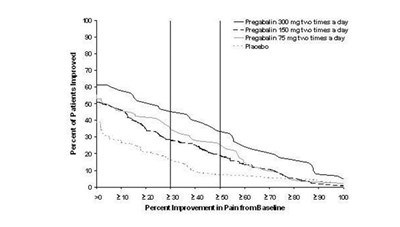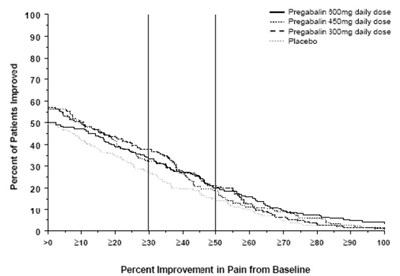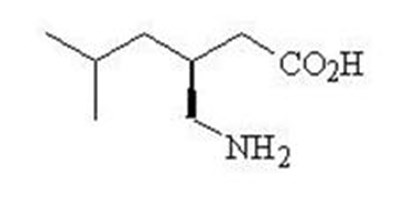Product Images Pregabalin
View Photos of Packaging, Labels & Appearance
- PDP - 68071 2330 9
- Figure 1 - pregabalin fig01
- Figure 2 - pregabalin fig02
- Figure 3 - pregabalin fig03
- Figure 4 - pregabalin fig04
- Figure 5 - pregabalin fig05
- Figure 6 - pregabalin fig06
- Figure 7 - pregabalin fig07
- Figure 9 - pregabalin fig08
- Figure 10 - pregabalin fig09
- Figure 11 - pregabalin fig10
- Figure 12 - pregabalin fig11
- Cockcroft and Gault equation - pregabalin formula
- Chemical Structure - pregabalin str
Product Label Images
The following 14 images provide visual information about the product associated with Pregabalin NDC 68071-2330 by Nucare Pharmaceuticals,inc., such as packaging, labeling, and the appearance of the drug itself. This resource could be helpful for medical professionals, pharmacists, and patients seeking to verify medication information and ensure they have the correct product.
PDP - 68071 2330 9

This is a warning label for a medication called Pregabalin 50mg. It is in capsule form and is packaged in a bottle with a lot number of 000000. The NDC number for this medication is 68071-2330-09. The label includes a warning to keep the medication out of reach of children and also provides the manufacturer's NDC (50228-351-90) and a serial number (00000000002). Patients are advised to check the manufacturer's label for a full list of ingredients and may report any side effects to the FDA at 1-800-FDA-1088. The medication should be stored at a controlled temperature between 59-86°F.*
Figure 1 - pregabalin fig01
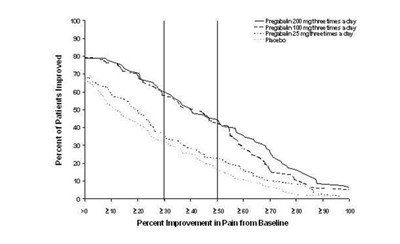
The text appears to be a graph displaying the percentage of patients improved in some medical treatment or study. The horizontal axis likely shows different stages or time periods, while the vertical axis indicates the percentage of patients improved. There is also a secondary graph showing the percent improvement in pain from baseline. However, due to the inconsistency and lack of clarity in the text, it is difficult to say for certain what the graph represents.*
Figure 2 - pregabalin fig02

This text appears to be a table showing various percentage values for patients' improvement and the dosage of Pregabalin for three days. The table also mentions "Percent Improvement in Pain from Baseline". However, the information provided is incomplete and difficult to interpret without context or further details.*
Figure 5 - pregabalin fig05
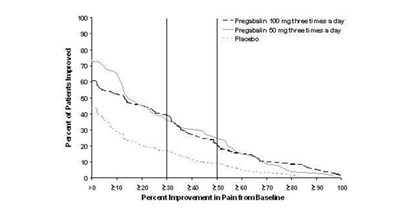
This is a clinical trial report that compares the effectiveness of Fregabalin (100mg taken three times a day), Pregabalin (80mg taken three times a day), and Placebo in reducing pain. The report presents the percentage of patients who improved, which is followed by a chart showing the percentage of pain improvement for each treatment.*
Figure 6 - pregabalin fig06
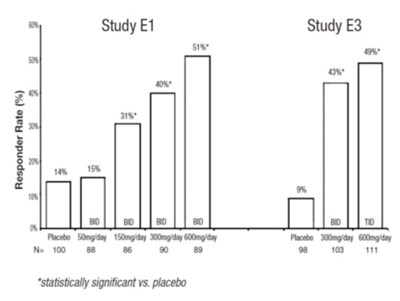
This is a report of multiple studies involving the use of a drug at varying dosages compared with a placebo group. The dosage range studied was between 50mg/day and 600mg/day. There is mention of statistical significance when compared with placebo, suggesting some positive effects of the drug.*
Figure 10 - pregabalin fig09

This appears to be a chart showing the percentage of subjects without LTR (perhaps a medical acronym) over a period of 120-180 days. There are two groups listed: Progabain and Placebo. The percentages range from 0-100 and are listed in increments of 10. There is no further information to provide a specific context or purpose for the chart.*
Figure 12 - pregabalin fig11
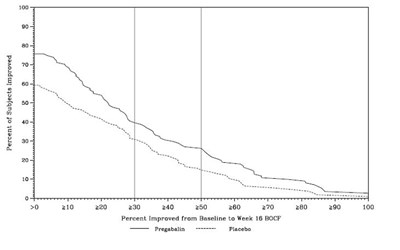
This appears to be a table showing the percent improvement of subjects after taking either Pregabalin or a Placebo. The table displays results at different week intervals, with data points ranging from 100 to 280.*
Cockcroft and Gault equation - pregabalin formula

This text appears to be a formula for calculating the renal creatinine clearance (CLCT) in patients. The formula involves subtracting the patient's age (in years) from 140, multiplying this by their weight in kilograms, and then multiplying the result by either 1 or 0.85 (depending on whether the patient is male or female, respectively). Finally, the result is divided by the patient's serum creatinine level (in milligrams per deciliter) multiplied by 72. This calculation can be used to estimate the patient's glomerular filtration rate, which can be an important indicator of kidney function.*
* The product label images have been analyzed using a combination of traditional computing and machine learning techniques. It should be noted that the descriptions provided may not be entirely accurate as they are experimental in nature. Use the information in this page at your own discretion and risk.
